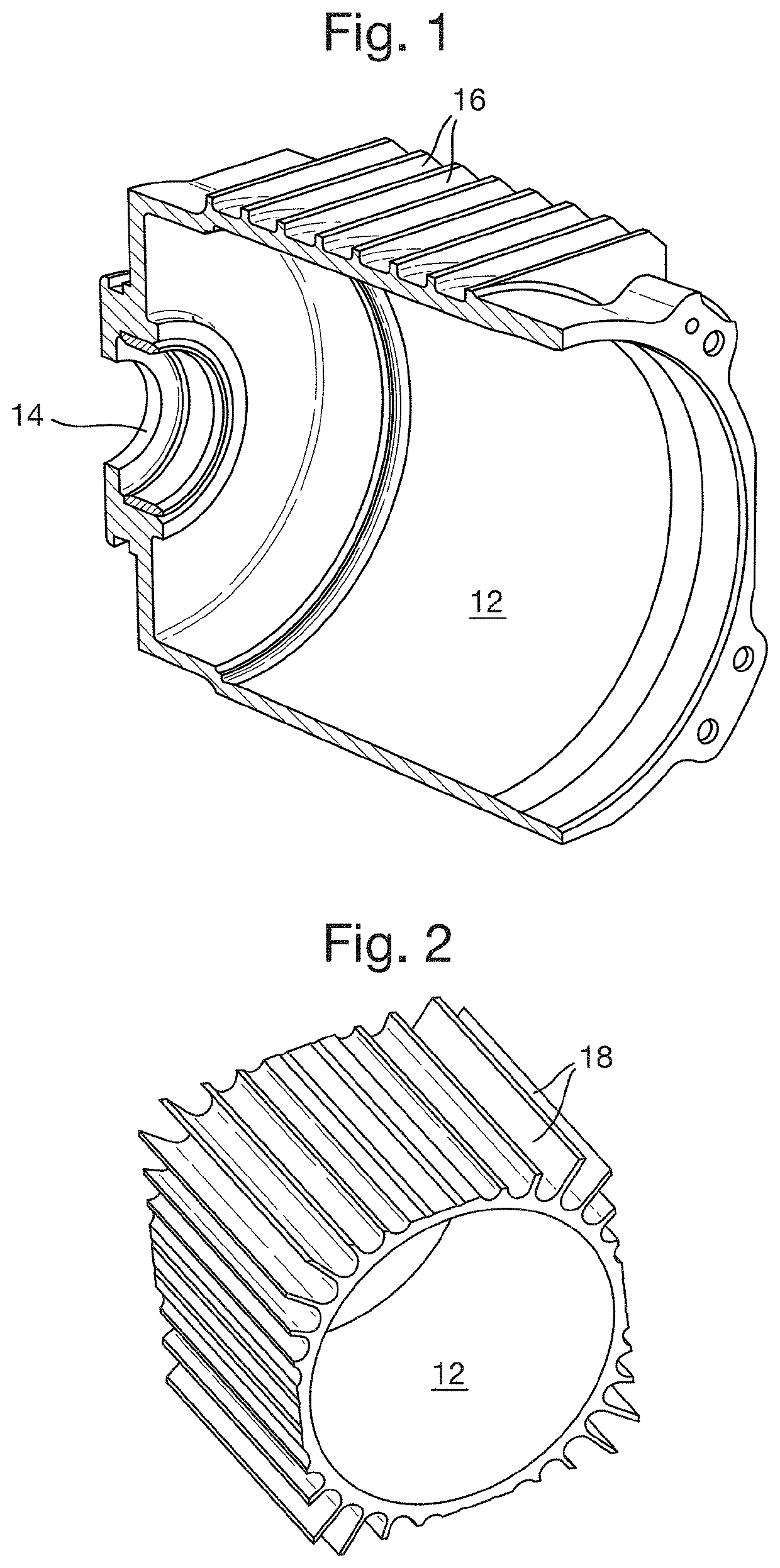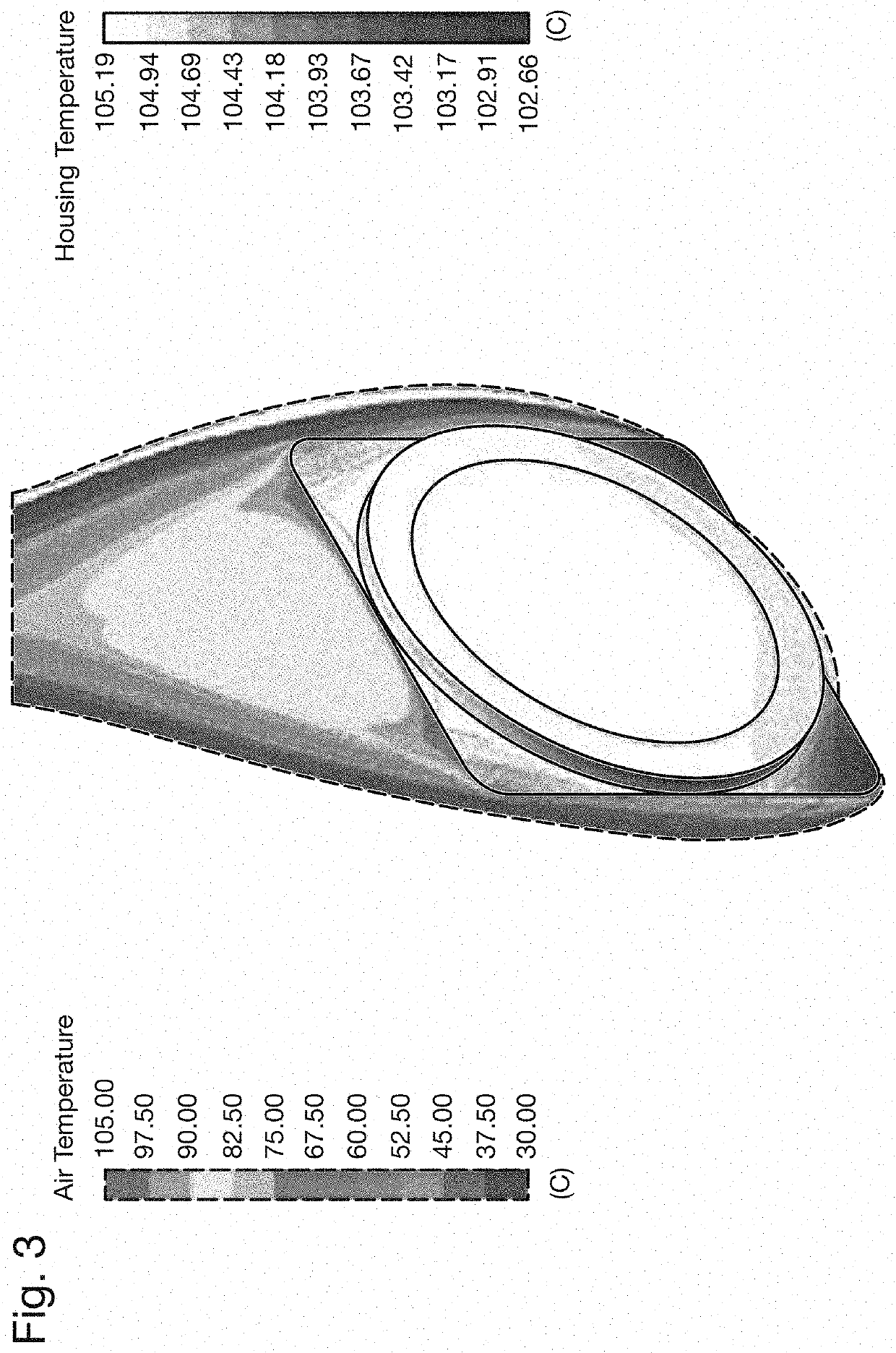Extruded housing for electric motor
a technology of extruded housing and electric motor, which is applied in the direction of dynamo-electric machines, magnetic circuit rotating parts, magnetic circuit shape/form/construction, etc., to achieve the effect of reducing the cost of the devi
- Summary
- Abstract
- Description
- Claims
- Application Information
AI Technical Summary
Benefits of technology
Problems solved by technology
Method used
Image
Examples
Embodiment Construction
[0024]The prior art housings of FIGS. 1 and 2, and the thermal performances shown in FIGS. 3 and 4 have been discussed above. FIG. 5 shows a proposed extruded motor housing 12 with axial fins 18 having radial cuts 20 extending circumferentially around the external surface of the housing 12. This extruded motor housing 12 may be formed by an extrusion process similar to that used for the housing 12 of FIG. 2, followed by a machining step where the radial cuts 20 are machined using a lathe or other machine tool. The use of a lathe allows for quick and effective machining of radial cuts into a rotationally symmetric component such as the motor housing 12. The motor housing 12 also includes a bearing support 14, which can be separately manufactured and then mounted to the cylindrical body of the housing 12 via any suitable means, for example via friction fit, brazing or welding.
[0025]As can be seen by a comparison of the thermal performance shown in FIG. 6 with the thermal performance s...
PUM
 Login to View More
Login to View More Abstract
Description
Claims
Application Information
 Login to View More
Login to View More - R&D
- Intellectual Property
- Life Sciences
- Materials
- Tech Scout
- Unparalleled Data Quality
- Higher Quality Content
- 60% Fewer Hallucinations
Browse by: Latest US Patents, China's latest patents, Technical Efficacy Thesaurus, Application Domain, Technology Topic, Popular Technical Reports.
© 2025 PatSnap. All rights reserved.Legal|Privacy policy|Modern Slavery Act Transparency Statement|Sitemap|About US| Contact US: help@patsnap.com



